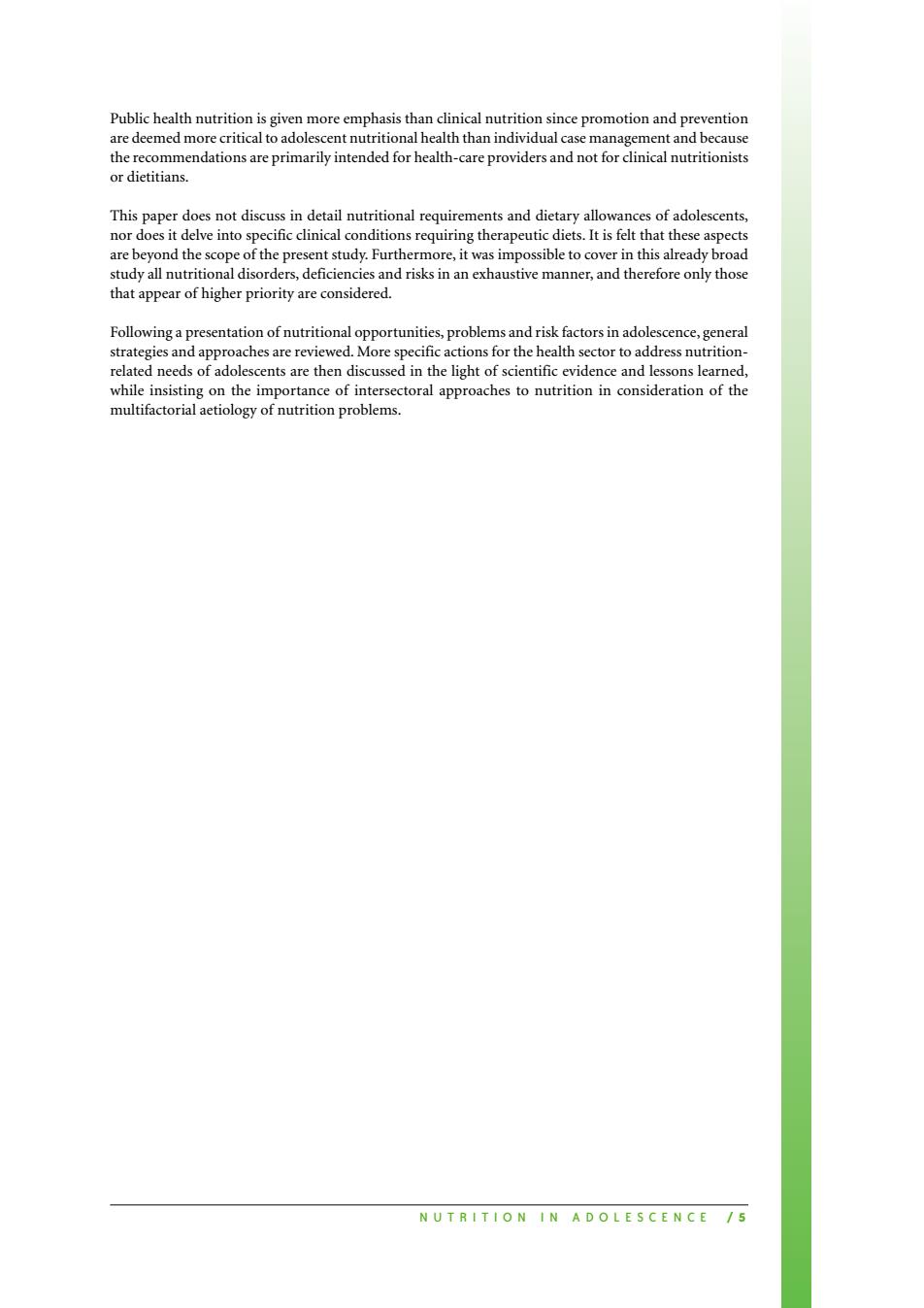正在加载图片...

Public health nutrition is given more emphasis than clinical nutrition since promotion and prevention are deemed more critical to adolescent nutritional health than individual case management and because the recommendations are primarily intended for health-care providers and not for clinical nutritionists or dietitians This paper does not discuss in detail nutritional requirements and dietary allowances of adolescents, nor does it delve into specific clinical conditions requiring therapeutic diets.It is felt that these aspects are beyond the scope of the present study.Furthermore,it was impossible to cover in this already broad study all nutritional disorders,deficiencies and risks in an exhaustive manner,and therefore only those that appear of higher priority are considered. Following a presentation of nutritional opportunities,problems and risk factors in adolescence,general strategies and approaches are reviewed.More specific actions for the health sector to address nutrition- related needs of adolescents are then discussed in the light of scientific evidence and lessons learned, while insisting on the importance of intersectoral approaches to nutrition in consideration of the multifactorial aetiology of nutrition problems. NUTRITION IN A DO LESC E N CE /5NUTRITION IN ADOLESCENCE / 5 Public health nutrition is given more emphasis than clinical nutrition since promotion and prevention are deemed more critical to adolescent nutritional health than individual case management and because the recommendations are primarily intended for health-care providers and not for clinical nutritionists or dietitians. This paper does not discuss in detail nutritional requirements and dietary allowances of adolescents, nor does it delve into specific clinical conditions requiring therapeutic diets. It is felt that these aspects are beyond the scope of the present study. Furthermore, it was impossible to cover in this already broad study all nutritional disorders, deficiencies and risks in an exhaustive manner, and therefore only those that appear of higher priority are considered. Following a presentation of nutritional opportunities, problems and risk factors in adolescence, general strategies and approaches are reviewed. More specific actions for the health sector to address nutritionrelated needs of adolescents are then discussed in the light of scientific evidence and lessons learned, while insisting on the importance of intersectoral approaches to nutrition in consideration of the multifactorial aetiology of nutrition problems